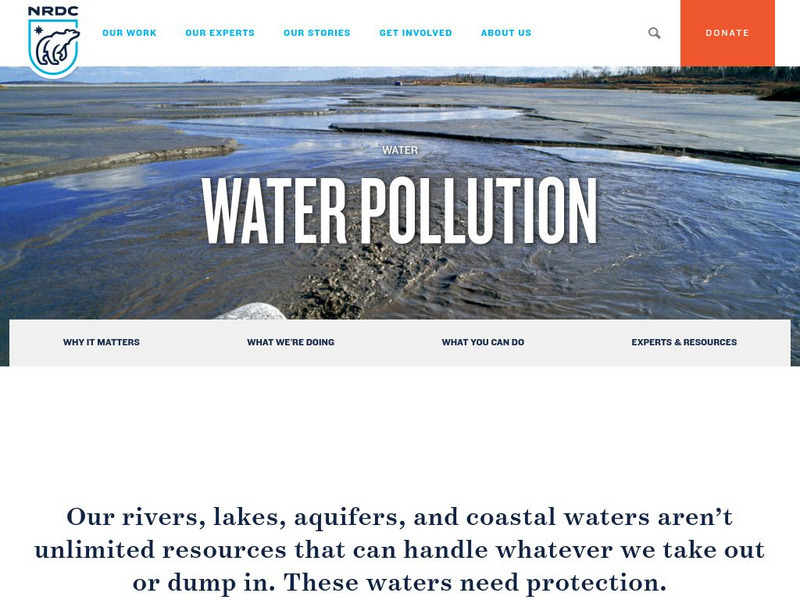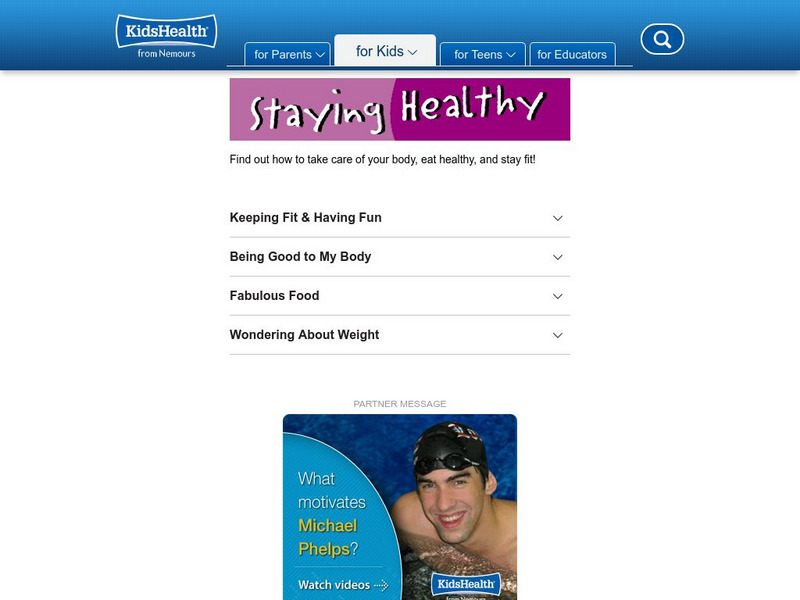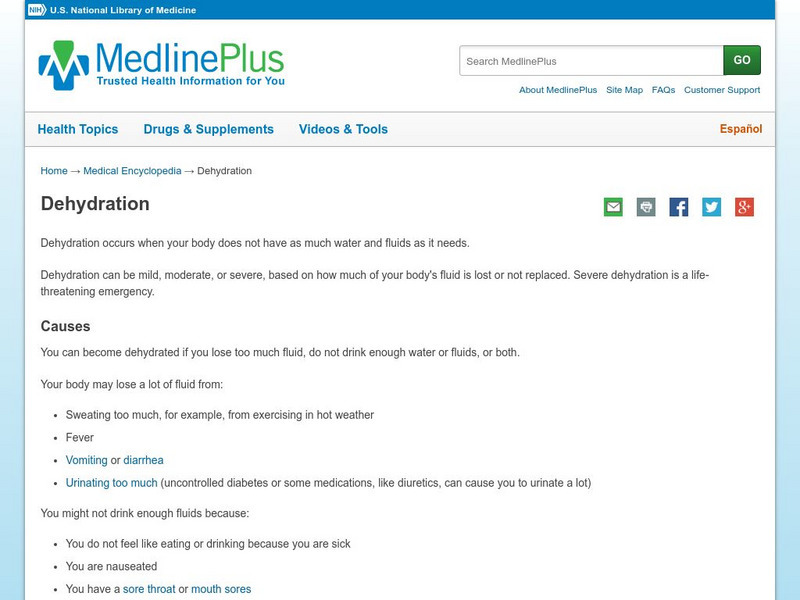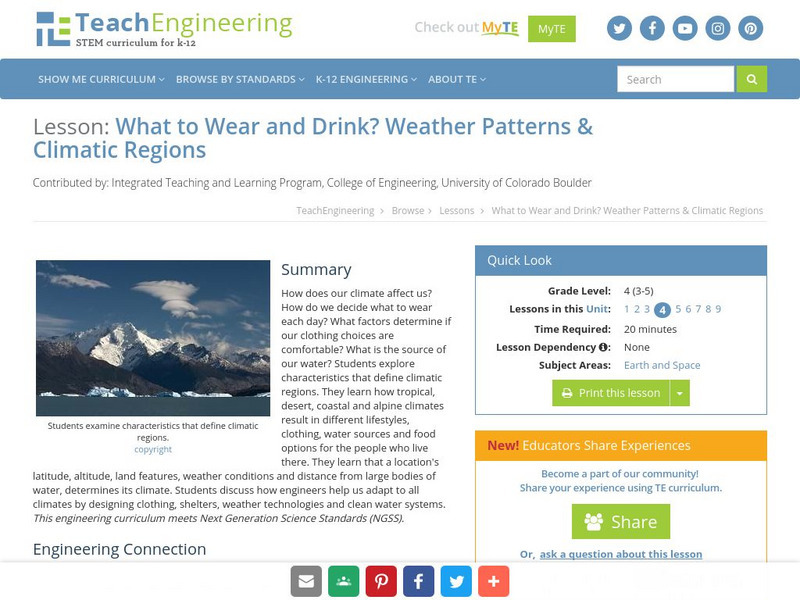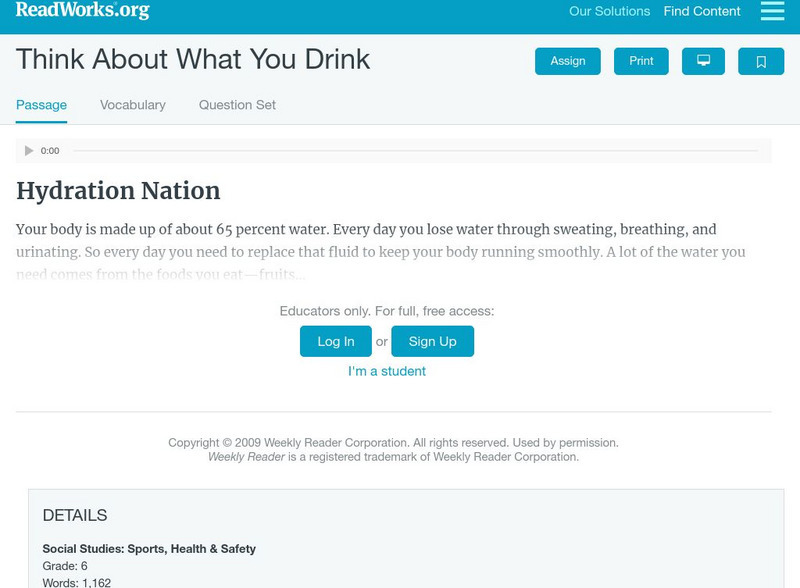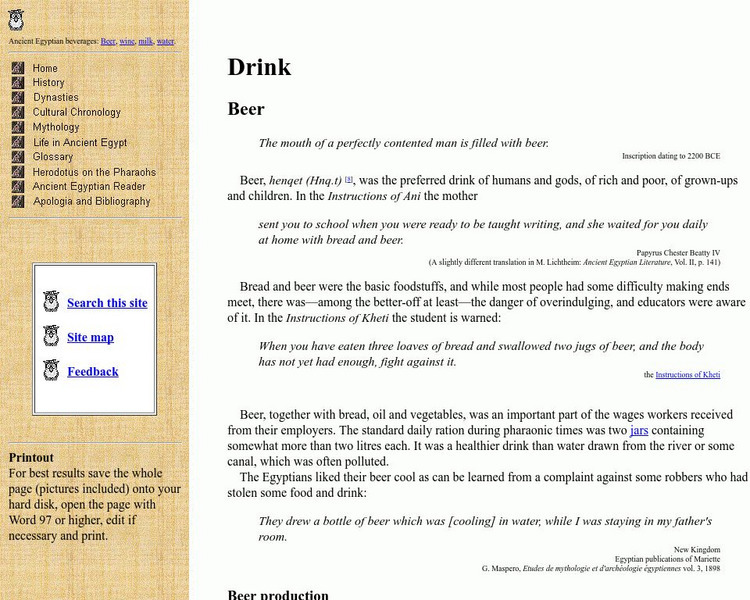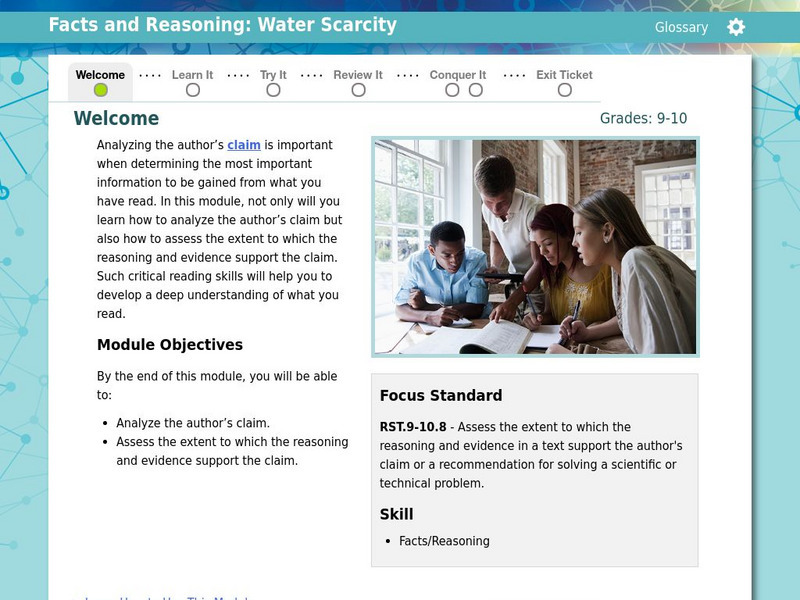Channel 4 Learning
4 Learning: Geography Essentials, Water
This site discusses the differences between clean water, clear water, and waste water. It also provides information on water usage and provides worksheets, images, and links for teacher usage.
Museum of Science
Ei E: Water, Water Everywhere: Lessons: Designing a Water Filters
This unit offers four lessons demonstrating a classroom working on the engineering problem of providing clean water as they imagine, plan, create, test, and improve their own water filters.
Other
Nrdc: Clean Water and Oceans
What prompted congress to pass the Clean Water Act? Has this legislation been successful? The Natural Resources Defense Council offers information on fresh and ocean waters, pollution control, conservation, and more.
Curated OER
Kids Health: Dehydration and Treating Dehydration
KidsHealth: Dehydration and Treating Dehydration
Curated OER
Kids Health: Dehydration
In addition to providing a good definition of "Dehydration," this website explains how dehydration affects the body, how people get dehydrated, and how you can treat and prevent dehydration.
Curated OER
Kids Health: Staying Healthy
Find yummy recipes for food to make yourself! There are also articles about the reasons for vitamins and minerals, how to eat when you're playing sports, and a number of other important topics.
Curated OER
Kids Health: Why Drinking Water Is the Way to Go
Every person, plant, and animal needs water to survive. Learn why water is so important for our health and how you can keep yourself hydrated and healthy by drinking enough fluids every day.
US National Library of Medicine
Medline Plus: Dehydration
This encyclopedia article on dehydration is organized into several sections, including: "Definition," "Causes, incidence, and risk factors," "Symptoms," and "Treatment."
TeachEngineering
Teach Engineering: How Full Is Full?
During this activity, students will learn about porosity and permeability and relate these concepts to groundwater flow. Students will use simple materials to conduct a porosity experiment and use the information to understand how...
TeachEngineering
Teach Engineering: What's Down the Well?
This activity looks at physical models of groundwater and how environmental engineers determine possible sites for drinking water wells. During this activity, students will create their own groundwater well model using a coffee can and...
TeachEngineering
Teach Engineering: Straining Out the Dirt
In this activity, students build a water filter with activated carbon, cotton and other materials to remove chocolate powder from water.
TeachEngineering
Teach Engineering: From Lake to Tap
In this activity, students will use a tutorial on the U.S. Environmental Protection Agency's website to learn about how surface water is treated to make it safe to drink.
TeachEngineering
Teach Engineering: What to Wear? What to Drink? Weather Patterns and Climatic R
How does our climate affect us? How do we decide what to wear each day? What factors determine if our clothing choices are comfortable? What is the source of our water? Young scholars explore characteristics that define climatic regions....
TeachEngineering
Teach Engineering: An Underground River
Groundwater is one of the largest sources of drinking water, so environmental engineers need to understand groundwater flow in order to tap into this important resource. Environmental engineers also study groundwater to predict where...
TeachEngineering
Teach Engineering: Who's Down the Well?
Drinking water comes from many different sources, including surface water and groundwater. Environmental engineers analyze the physical properties of groundwater to predict how and where surface contaminants will travel. In this lesson,...
Read Works
Read Works: A Clean Drink of Water
[Free Registration/Login Required] An informational about people in a South American village who needed clean water to drink. A question sheet is available to help students build skills in reading comprehension.
Read Works
Read Works: Think About What You Drink
[Free Registration/Login Required] An informational text about the pros and cons of bottled water. A question sheet is available to help students build skills in reading comprehension.
TeachEngineering
Teach Engineering: Fresh or Salty?
Between 70 and 75% of the Earth's surface is covered with water and there exists still more water in the atmosphere and underground in aquifers. For this lesson, learners learn about water bodies on the planet Earth and their various...
TryEngineering
Try Engineering: Filtration Investigation
Working in teams of "engineers", students learn about filtration systems and how they can remove impurities from drinking water.
TED Talks
Ted: Ted Ed: When Is Water Safe to Drink?
Mia Nacamulli examines water contamination and treatment.
TED Talks
Ted: Ted Ed: The Science of Flint's Water Crisis
The water crisis in Flint, Michigan is a prime example of science being ignored, unknown and even misused. The switch in water source damaged hundreds of millions of dollars of infrastructure, caused deadly bacterial outbreaks and...
Andre Dollinger
Reshafim: Beverages
Learn about the beverages the Egyptians drank, how they were produced, and in what rituals they were used. A very comprehensive look at Egyptian drink.
Thinkport Education
Thinkport: Facts and Reasoning: Water Scarcity
In this science-themed literacy lesson about water scarcity, students identify the author's claim and how the author supports this claim with evidence.



